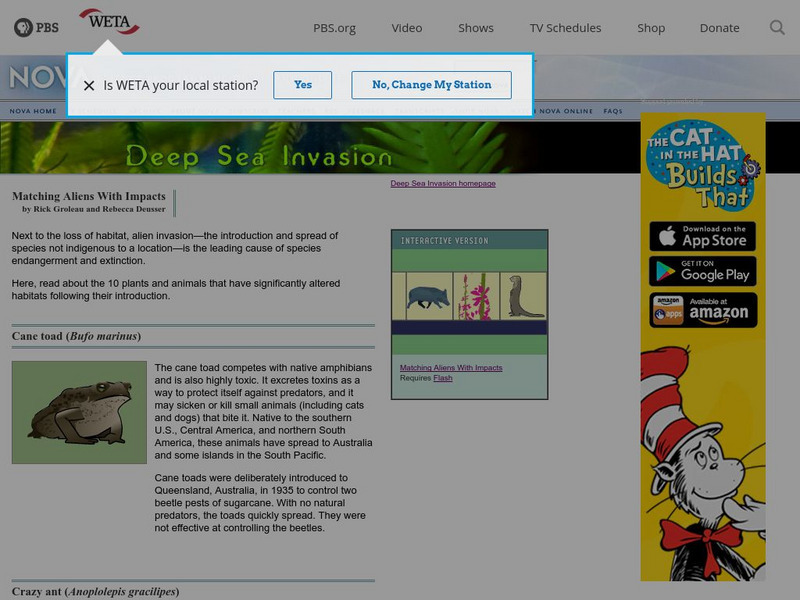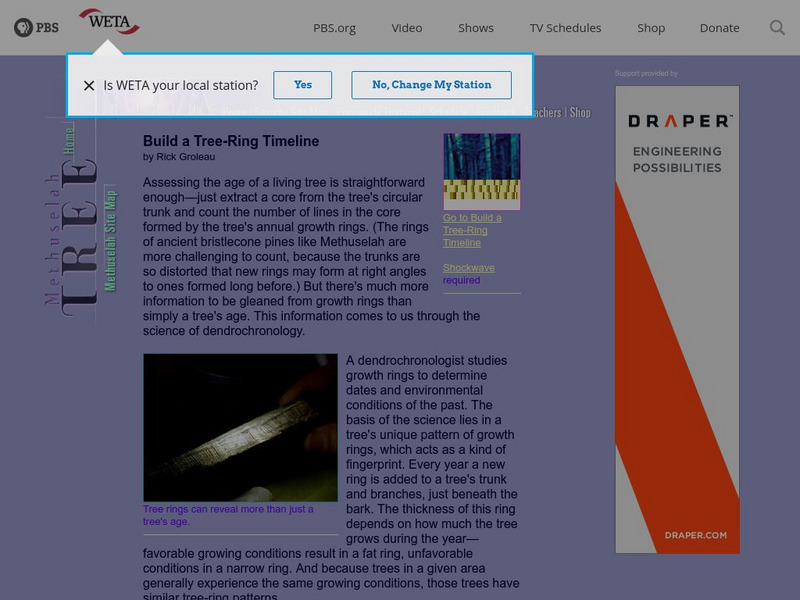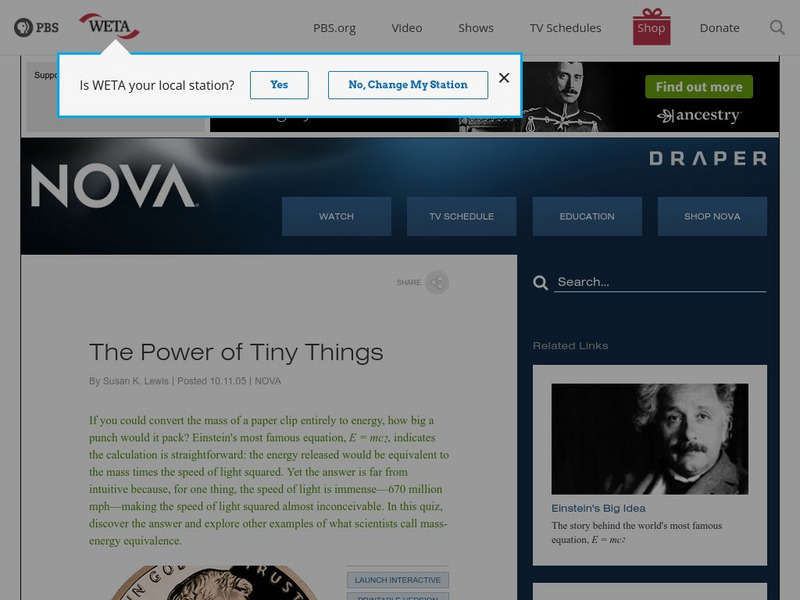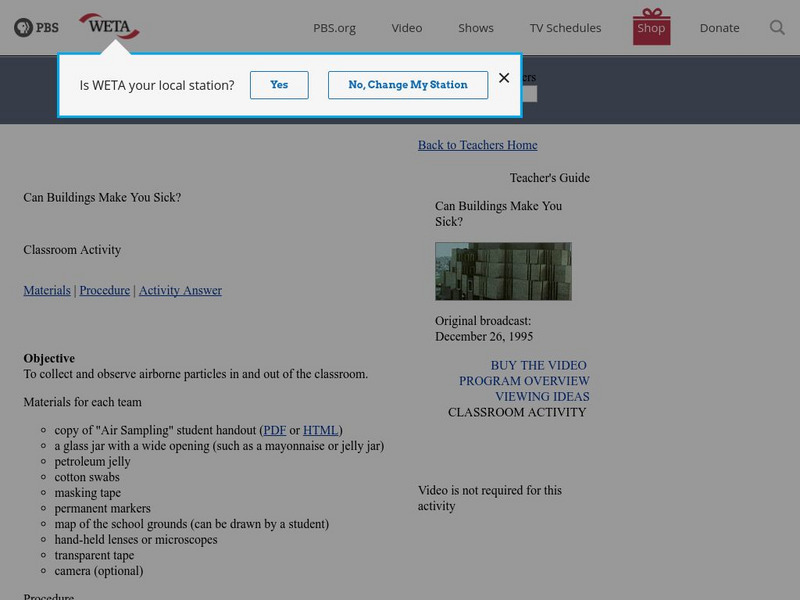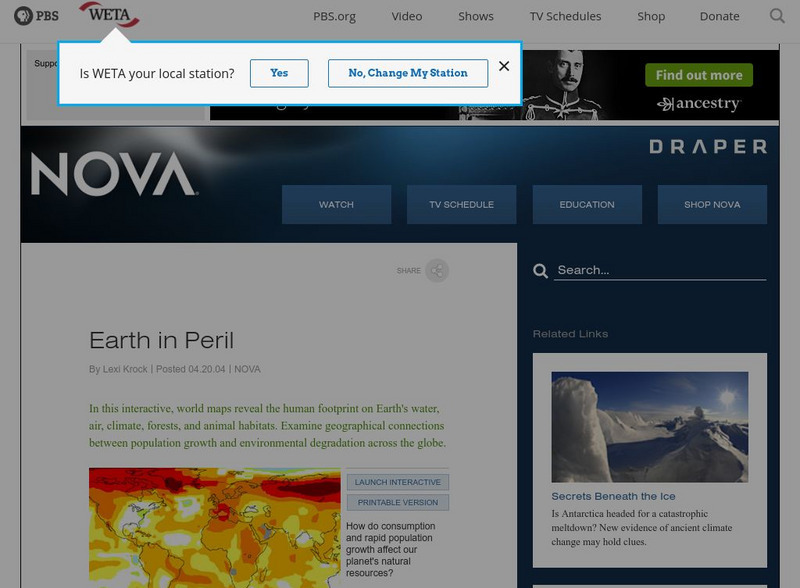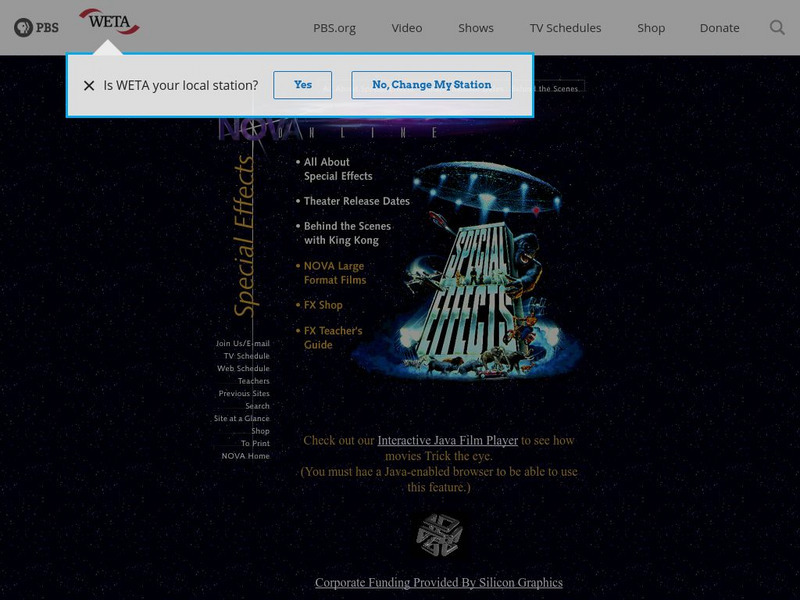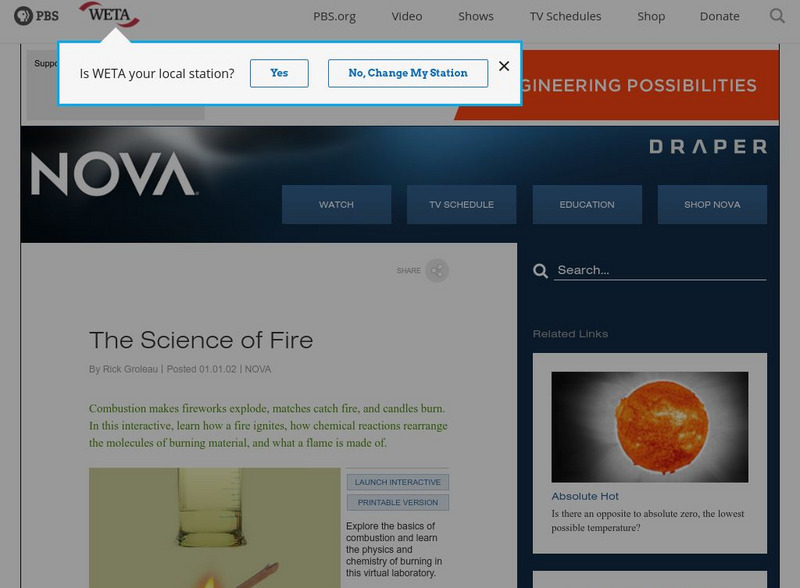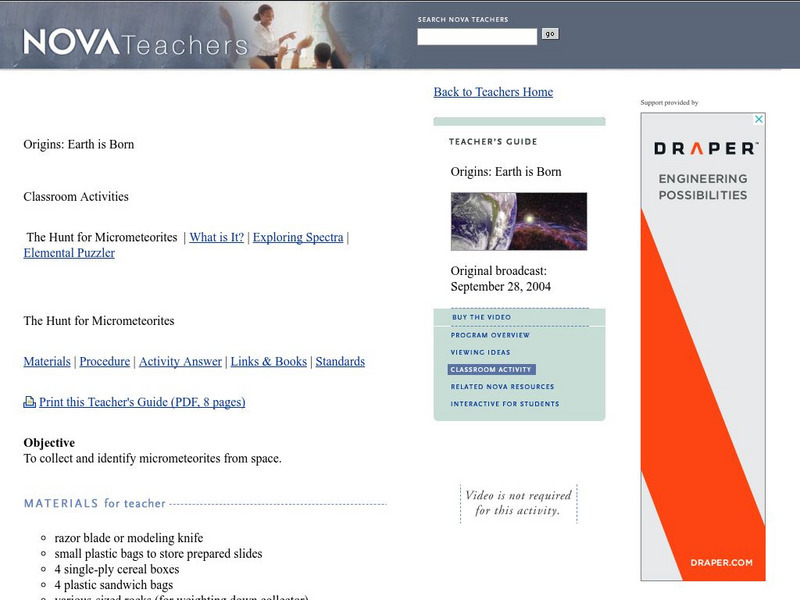PBS
Pbs: Nova: Learning About Earth's History With Ice Cores
This resource explains how ice cores are used to analyze past events like air pollution, volcanic activity, climate changes, and radioactivity.
PBS
Nova: Matching Aliens With Impacts
One of the major causes of species extinction is the introduction of alien species. Information about ten different invasive species is presented. Find out how well you know the information by matching alien species with the effects...
PBS
Nova: Build a Tree Ring Timeline
This activity is an introduction to the branch of science called dendrochronology. Discover what this science tells us about the past and see if you can create a tree ring timeline by matching up band patterns from several different trees.
PBS
Pbs Teachers: Cracking the Code: Explore a Stretch of Code
Investigate the makeup and function of genes and genetic code by exploring an actual stretch of human DNA in this activity.
PBS
Pbs Teachers: Neanderthals on Trial
Learn about Neanderthals, understand the scientific methods used to create theories from fragmentary evidence and interpret a Neanderthal artifact found at a cave site in Slovenia.
PBS
Pbs Teachers: Methuselah Tree
Examine how scientists determine the age of living and non-living trees and identify factors that impact sizes of tree rings. Analyze tree ring samples and determine the age of the oldest sample.
PBS
Pbs Nova: The Power of Tiny Things
Have you ever wondered what would happen if you converted the mass of a paper clip into an amount of energy? In this informative quiz, discover the answer, and explore other examples of mass-energy equivalence.
PBS
Pbs Teachers: Time Travel
Use this NOVA activity to discuss the nature of time and the grandfather paradox. Examine time from different perspectives by plotting ages on a timeline, estimating how long a minute is and imagining going back in time to change...
PBS
Nova Teachers: Can Buildings Make You Sick: Classroom Activity
In this lesson plan, participants will build a structure to collect particulates from the air from around the school building. Then observe and analyze the samples obtained to study indoor and outside air pollution.
PBS
Nova: Build a Bridge
This exciting and interactive site illustrates the four main types of bridge building styles. Also contains games and hands-on descriptions. Appropriate for upper elementary and middle school students.
PBS
Pbs Nova: Pilot the Wright Brothers' Flyer
In this interactive, find out how the Wright brothers' design of the first flyer provided lift and speed, and allowed the pilot to make adjustments in response to changes in wind speed and direction.
PBS
Pbs Nova: Dirty Bomb: Sources of Radiation
In this interactive, learn about sources of both beneficial and harmful radiation which exist in many forms all around us.
PBS
Pbs: Illuminating Photosynthesis
What does a plant need to survive? How does a plant eat? Learn the basics of photosynthesis through poetry. Appropriate for 4th grade and above.
PBS
Nova: Earth in Peril
A series of nine maps with accompanying explanations. They show how population growth has affected the environment around the world in terms of water availability, climate change, land and forest use, and more. There are both interactive...
PBS
Nova: Kidnapped by Uf Os?
Are reported UFO sightings real or are they nothing more than fantasy? This article by NOVA examines both sides of the story by speaking to three believers and three skeptics. Listen to their stories and decide for yourself.
PBS
Pbs Nova Online: Lost at Sea the Search for Longitude
"The quest for a reliable method to find your way at sea was one of the thorniest problems of the 1700s." Find out about the search for longitude at this NOVA site. Includes interactive Shockwave game, learning activities and more.
PBS
Pbs: All About Special Effects
PBS and NOVA's presentation on Special Effects. Student can read interviews with a director and producer and learn about the history of special effects.
PBS
Nova Online Adventures: Pyramids, the Inside Story
Use this site to explore the pyramids of Egypt and to learn how they were built and why.
PBS
Pbs: The Science of Fire
A virtual experiment bringing you to the center of combustion! Understand how fire ignites, what makes a flame, and how molecules rearrange themselves in chemical reactions. This interactive activity gives students four different...
PBS
Pbs: Nova: Destroy the Castle
Design your own trebuchet catapult, launch the sandstone balls, and destroy the castle. Decide on the size of your projectiles, where to place your trebuchet, and other factors critical to success.
PBS
Nova: History of the Universe
This interactive timeline provides information on the big bang as well as other major events of universe evolution. It also provides predictions about the universe's future.
PBS
Pbs Teachers: Origins: Earth Is Born
Collect micrometeorites from space -- remnants of the time when the solar system formed about 4.6 billion years ago. Create a sky dust collector, sort particularate matter according to attributes and identify micrometeorites by their...
PBS
Pbs: Anatomy of a Tsunami
Scientists used maps and seismic data to produce a computer simulation that accurately shows the creation of the wave that shook the world. In this interactive, examine some of the models and images that reveal details of the tsunami...
PBS
Pbs Nova: The Other Elevator Inventor
Explore the early world of elevator technology. You will find out that there were actually two people with the name of Otis involved in the invention of the elevator: Elisha Otis and Otis Tufts. The practical technology won out. Click on...



